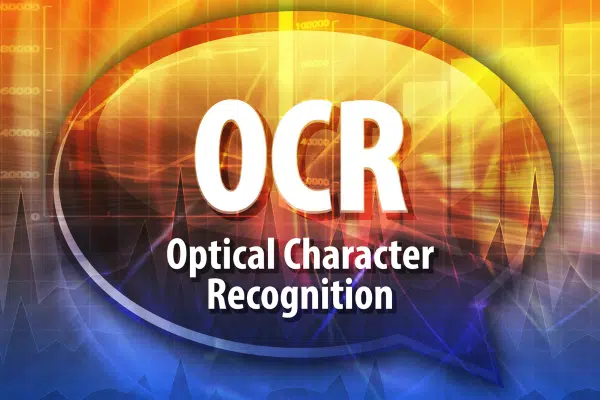Optical Character Recognition (OCR)—Timeless Technology

In a world filled with rapid-fire technological advancements, it’s natural to question the relevance of long-standing technologies. But Optical Character Recognition (OCR), which has been around for 50 years, has become even more common in our daily work and personal lives.
Let’s explore the enduring significance of OCR, which transforms static content into a smart searchable file, and why it remains a relevant and indispensable tool.
A Glimpse into OCR’s Past
Early OCR systems utilized pattern recognition techniques based on simple character templates. As technology advanced, more sophisticated algorithms were introduced, incorporating statistical modeling and machine learning approaches. Over time, algorithms evolved to recognize different languages, fonts, and writing styles, leading to the development of robust and versatile OCR systems that work in tandem with document management systems like DocLink.
How OCR Works
OCR involves a series of steps that digitize documents by transforming the visual representation of text into editable and searchable digital text. Here’s a high-level look at those steps.
- Scanning or Image Capture
The process begins with scanning a source document to create a digital representation of the text or using an existing file image that OCR can analyze.
- Preprocessing
OCR preprocesses the captured image, removing any distortions that may affect character recognition.
- Character Recognition
Algorithms leverage machine learning and pattern recognition techniques to identify and differentiate between characters, fonts, and languages. It does this by analyzing the visual patterns, shapes, and structures present in the image.
- Post-processing and Output
After character recognition and classification, OCR performs post-processing to refine the results. Post-processing involves analyzing the context, applying linguistic rules, and considering surrounding characters to enhance accuracy and correct any errors.
Finally, OCR outputs the recognized and extracted text, which you can then edit, search, or conveniently store. The resulting digital text is available for a wide range of applications, which we highlight below.
What OCR Can Do
While the technology has existed for decades, OCR remains as relevant as ever. Businesses and individuals widely use it for:
Document Digitization
With vast amounts of printed and handwritten material still in existence, OCR remains crucial for converting physical documents into digital form. Historical archives, libraries, and businesses continue to rely on OCR to unlock the wealth of knowledge in these documents. OCR ensures preservation, facilitates searchability, and enhances accessibility to valuable information.
Streamlining Workflows
OCR’s ability to automate data entry and extraction processes remains invaluable in industries or departments that traditionally rely heavily on paper. By rapidly digitizing documents, OCR eliminates manual data entry, reduces errors, and streamlines workflows. It enables businesses to process large volumes of documents efficiently, improving productivity and cost savings.
Digital Transformation
OCR continues to bridge the gap between the analog and digital worlds. It allows organizations to convert legacy paper-based records into searchable digital archives, fueling seamless integration with modern systems like ERP and HRMS. In this way, OCR can accelerate an organization’s digital transformation process, unlocking valuable insights and improving efficiency.
Language Processing and Translation
OCR works with different languages, localization efforts, and cross-lingual information retrieval by converting printed text into digital form.
Data Analysis and Insights
By digitizing printed documents, OCR allows us to garner valuable insights from vast amounts of textual data. We can then easily use that data for sentiment analysis, market research, content analysis, and other data-driven decision-making processes.
How to Get OCR Technology
You may be asking how you can incorporate this powerful technology into your organization’s workflows. The simplest and most effective way is implementing a document management software solution, like DocLink, that leverages OCR as its superpower. We’ve written extensively on the capabilities of this tool. Contact us to learn more about document management with OCR.
Watch the on-demand webinar: DocLink Document Management with OCR – Save Time and Improve Productivity




